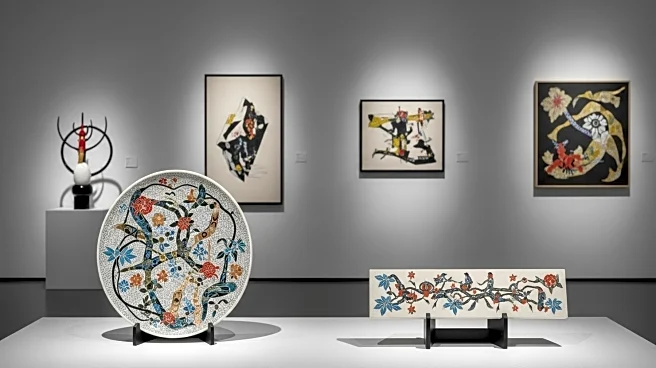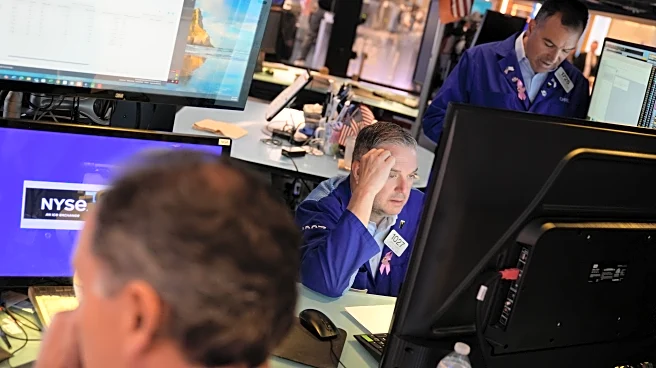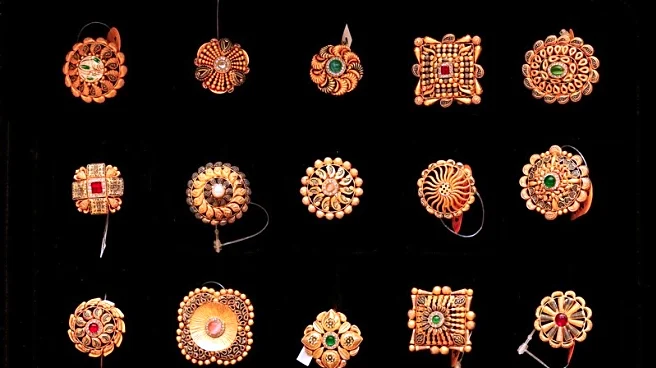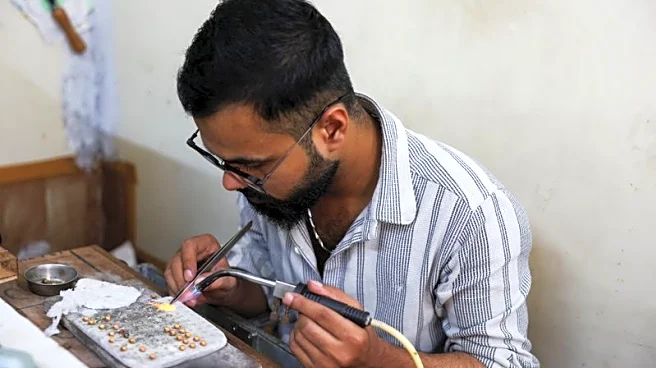What is the story about?
What's Happening?
Leonard Tsuguharu Foujita, a Japanese-French artist known for his unique blend of Eastern and Western art styles, is experiencing a resurgence in the art market. Born in Tokyo in 1886, Foujita moved to France in 1913, where he became a prominent figure in the Parisian art scene of the 1920s. His works, which include playful depictions of animals, nudes, and religious iconography, have historically been popular among Japanese collectors. However, over the past decade, his art has gained wider recognition across Asia and Europe, leading to record-breaking auction sales. In 2018, Bonhams sold one of his paintings for $9.4 million, far exceeding its estimated value. This renewed interest is partly attributed to the rise of new art fairs in Asia, which have introduced Foujita's work to new audiences.
Why It's Important?
The revitalization of Foujita's market is significant as it reflects broader trends in the global art industry, where Asian buyers are increasingly influential. This shift not only highlights the growing economic power of Asian countries but also underscores the cultural exchange between East and West. As Foujita's works gain popularity, they contribute to the diversification of art collections worldwide, offering collectors a unique blend of Eastern and Western artistic traditions. The increased demand for his art also suggests a growing appreciation for lesser-known artists from the early 20th century, potentially leading to more discoveries and reevaluations of artists from this era.
What's Next?
Bonhams is set to auction another of Foujita's works, 'Chiens savants, ou le carnaval des chiens,' with a conservative estimate of $2 million to $2.7 million. This upcoming sale could further solidify Foujita's position in the global art market. As interest in his work continues to grow, more collectors from diverse regions, including the U.S., Europe, and Latin America, may seek to acquire his pieces. This could lead to higher auction prices and increased visibility for Foujita's art in major galleries and exhibitions worldwide.
Beyond the Headlines
Foujita's resurgence in the art market also raises questions about the preservation and promotion of artists' legacies. Following his death in 1968, Foujita's work remained relatively obscure until the 1980s, when Japan began to idolize him again. The role of heirs and art institutions in maintaining and promoting an artist's legacy is crucial, as seen in the bequest of over 2,300 works to the Musée des Beaux-Arts de Reims. This case highlights the importance of strategic promotion and the impact of cultural heritage on an artist's market value.
AI Generated Content
Do you find this article useful?















